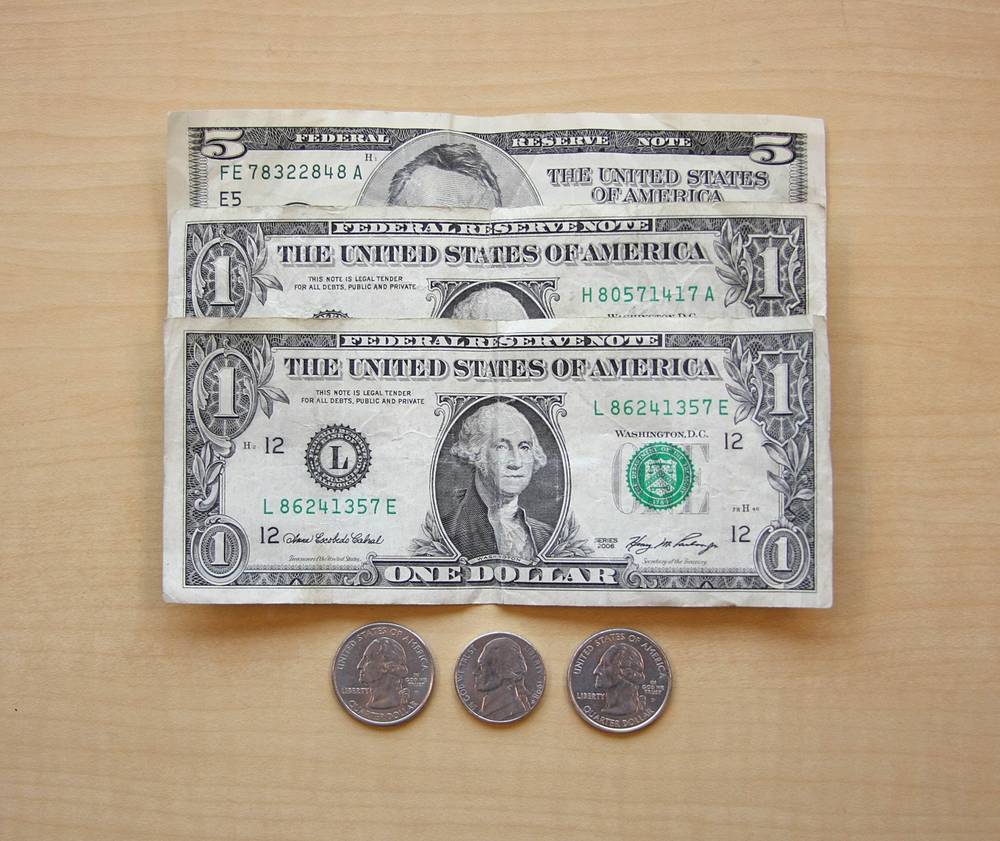Hallelujah, right? The minimum wage was increased last month! So why are so few people rejoicing? It could have something to do with the fact that it benefits almost no one, least of all Las Vegas’ meagerly paid employees. And there are a lot of them, folks. According to estimates from the Nevada Department of Employment, Training and Rehabilitation, 7.9 percent of Las Vegas’ workforce makes minimum wage. That doesn’t sound like a lot, but it amounts to more than 73,000 workers. Luckily, a great many of those work in the hospitality industry, which means that on top of minimum wage, they’re bringing in tips. (Nevada is one of the few states nationwide that doesn’t allow employers to use the “tip credit,” in which workers are paid a base of $2.13 an hour and expected to make up the rest in tips.)
But many more aren’t, and what’s worse, they’re trying to raise families with this pay—$7.25 an hour is the federal minimum, and Vegas employers pay from $7.25 if they offer a qualified health care plan to $7.55 if they do not. And even assuming that it’s a two-income family making minimum wage, consider this: A 2008 study by Keith Schwer, director of the Center for Business and Economic Research at UNLV, indicated that it costs at least $39,218 a year for a two-parent, two-child family to survive in Las Vegas. Assuming normal working hours, the current minimum wage pays those two parents a grand total of under $30,000. And it’s not 2008 anymore—everything is more expensive now, coupled with the fact that employment compensation nationwide has increased over the last 12 months by 1.8 percent, the lowest amount since 1982.
“I think the data shows that [historically] the minimum wage in inflation-adjusted terms was declining, that is to say that it was not keeping up with the rise in prices,” Schwer says. “What you’ll find is it’s very hard for someone on minimum wage to have what most would identify as a minimum family budget.”
Even kids living with their parents marvel at how little minimum wage actually amounts to.
Andrew Hunt, 19, started at Raising Cane’s Chicken Fingers when he was 16, for $7 an hour. It all went for gas to get to his job and whatever spending money was left over. He’s now making $11.75 an hour as a shift manager there, and is attending college, although he still lives at home. “I had the opportunity to move out on my own, and I think I could do it on my current salary if I budgeted very strictly,” Hunt says. Not so with his original salary. “Ooohh, I don’t know if it’s possible. Rent is, what, at least $600 a month? You’d have no money left for food, family, really for anything.”
And the increase is only causing headaches and tough decisions for employers, who either have to lay off employees to cover the increased cost or deal with frustrated employees when those who are making minimum wage get a “raise,” but those who make more do not.
“It’s a real problem,” says Jim Reese, owner of Hash House a Go Go. “It can become a morale problem when you have tipped employees getting a raise that gets them close to what you might pay someone in the kitchen who does not get any tips.” Reese says his business is doing well enough that the minimum-wage increase should not result in any lost jobs, but he adds, “I would have to lay off people if I had to give the same percentage increase to all my employees. No question. At the end of the day, the answer is that yes, I truly believe that a minimum wage increase for the restaurant industry costs jobs.”
Still, Reese doesn’t argue that the minimum wage, in and of itself, isn’t a pretty pathetic sum to expect anyone to live off of. “The majority of your tipped minimum-wage employees don’t even look at their base paychecks. It’s all about the tips,” he says, adding that none of his employees are making just minimum wage.
And for all those who would bag on employers paying only the minimum, Reese says to consider this—he has to pay taxes on all the tips, in addition to an increased modified business tax and higher health-permit fees. “The average restaurant is lucky to make 4 to 7 percent profit a year. At the end of the day, I’m paying a significant increase to keep the staff that I do have, and I’m very fortunate in the sense that my business is holding up, even in this economy. I know for a fact there are many in my same position who are not.”
Joe Micatrotto, co-owner and vice president of marketing and public relations for fast food chain Raising Cane’s Chicken Fingers, says most of his minimum-wage earners are kids 16 to 18 just getting their start, and that the pay quickly increases with the experience level. “We’ve never used minimum wage as our balance point.”
And with the difficult economic times facing the country, he’s getting an increased number of more skilled people applying for jobs than a year prior. “We were always second fiddle to the union jobs, but now we’re not. And with more experience comes a higher starting wage.”
That has, to some degree, raised the cost of doing business, but Micatrotto says the minimum-wage increase should not cost any jobs. “We made a decision to limit benefits so we could maintain a certain level. But we’re not looking for minimum-wage kids anymore. We’re looking at applicants who plan on being stable, who want to get benefits, who will justify the amount we’re paying them.”








Previous Discussion: